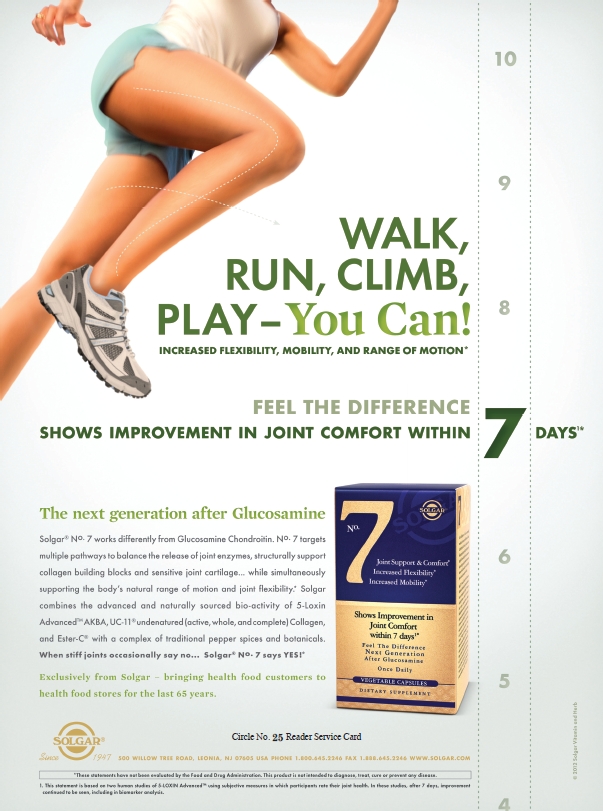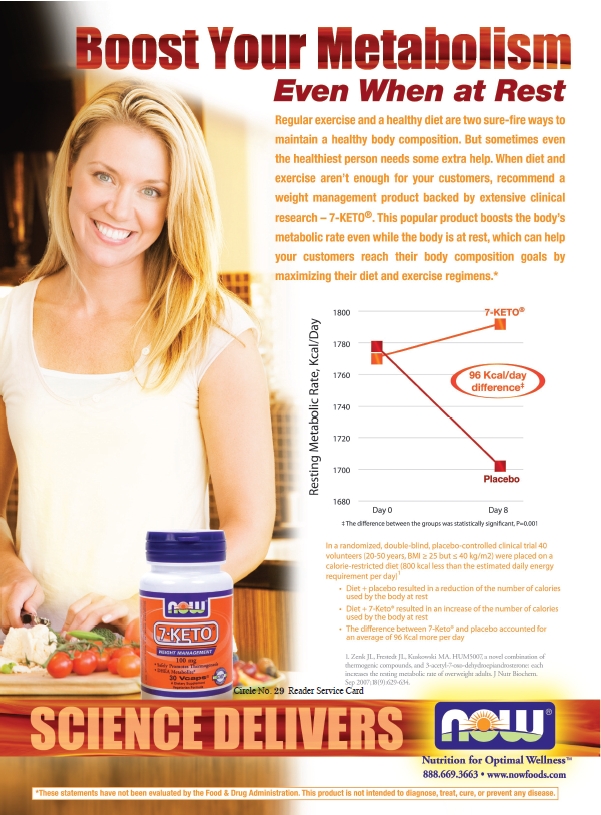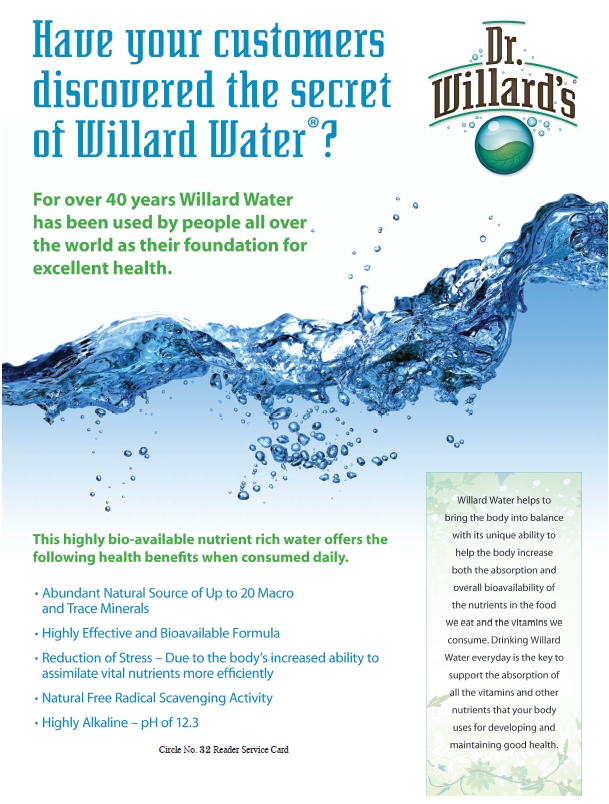When my kids were growing up in the 1970s, my wife could always consult the teachings of our friend, pediatrician Lendon Smith, M.D. His advice helped us through many of the problems common to children of all eras. Mothers can always use the good advice of seasoned pediatricians who are also well educated in orthomolecular medicine as well as conventional medicine. Pediatrician Ralph Campbell, M.D., has taken the time to pass along some of his sage advice to today’s mothers in his new book, The Vitamin Cure For Children’s Health Problems.
Passwater: Dr. Campbell, why did you become a pediatrician?
Campbell: As a child—it must have been sparked by my mother—I had a strong desire to learn how our bodies work. I loved junior high science. At that time, my older sister was living at home with us while her husband was undergoing pilot training in a God-forsaken spot that could not accommodate wives—especially expectant mothers. I soon assumed my role of part-time, surrogate father and, strangely enough, enjoyed even the menial chores. By high school age, I had set my goals toward medicine. A nurse cousin was steering me into the thinking doctor specialty, pathology. But, I had decided on a people doctor career. A look at old movies reveals the influence of Freudian psychology at those times. I could see that many adults were overly concerned about their bowels. I couldn’t deal with that; so I narrowed the field of choices to just pediatrics.
Before my last year of high school arrived, with World War II roaring and the inevitability of being drafted, I took my physical and opted for the Navy Hospital Corps. Ironically, I was drafted the day the war ended. I spent the next 18 months with marines in San Diego or Camp Pendelton. For a kid just out of high school, the responsibilities were awesome. I literally ran a genito-urinary clinic (translates: V.D.) or the psych unit (the “psychiatrist” was a “six-week wonder”—six weeks of special training was it).
After college for both my high-school sweetheart and me, we married and immediately shot out of the laid-back Southern California culture to Yale Medical School. I think the “east” and the “west” learned from each other, as we realized what a diverse country we lived in.
One thing in our education that was totally lacking was nutrition instruction. I don’t think it could be attributed to my Wild West upbringing, but to my mother, who put some good reading material in front of me at a tender age. I didn’t think to ask my eastern colleagues about their early learning. We were all so busy stuffing the medical curriculum into our heads, there was no time for reflection. First-hand pediatrics began in my first year of medical school with the birth of a daughter and again in the fourth year with the birth of a son. It was much like having a lab course attached to the academic studies.
More cramming of information and less time for reflection continued the next three years in internship and residency programs. This equipped us well for the management of acute illness but not so well for chronic problems. Real education began with the start of practice. My education came from workers in the trenches rather than professors.
I passed my board exams and became a member of the American Academy of Pediatrics (AAP) in 1960. The AAP was perfectly suited for the times. Families did well, financially, and wanted to learn all they could to provide the “best” for their children. The journal Pediatrics was replete with good nutrition articles that provided sound advice for pediatricians. Many cultural changes crept in: processed foods, mothers taking jobs, “hype” on children’s TV, lessening of economic good times.
Quick solutions with medicines and vaccines gradually displaced much of the time-honored pediatric “well” check. Time was not allowed for good clinical evaluation for developmental progress or nutrition assessment and education. With the advent of health insurance, the pediatrician was more readily reimbursed for “doing things” than for educating his patients with self-help tips. I felt like I was being led by the nose by having to conform to the insurance carrier’s way of doing things. These disruptions, coupled with bad air and bad water, prompted our move to Montana.
Inheriting a commercial cherry orchard soon pointed to another deficiency in my education: the toxic pesticides to which we are exposed. It didn’t take long to find, as with drug toxicity, there is much neglect or overt cover-up in our agencies that are designed to look out for us, when considering agricultural chemicals. Fortunately, I found my way into organizations that provided me with honest evaluations. Eventually, Jack Challem (author and publisher of The Nutrition Reporter) guided me into the “Nutrition Today” orthomolecular medicine meetings. I finally found some solid backing for megavitamin use that had me feeling almost like a maverick.
 Our children can be helped. It is never too late. I will do all I can in promoting the idea that new immunizations and new antibiotics are not going to keep pace with changes in the disease-causing agent itself. Improved immune system function can be obtained by proper nutrition and other life-style changes, such as exercise and avoidance of environmental toxins as much as possible.
Our children can be helped. It is never too late. I will do all I can in promoting the idea that new immunizations and new antibiotics are not going to keep pace with changes in the disease-causing agent itself. Improved immune system function can be obtained by proper nutrition and other life-style changes, such as exercise and avoidance of environmental toxins as much as possible.
Passwater: What influenced you to embrace orthomolecular medicine?
Campbell: Pediatrics came first, then orthomolecular medicine. Both my practice of pediatrics and orthomolecular medicine evolved. Articles in Pediatrics that we all studied were replete with those that dealt with sound nutrition principles. Early on, I applied what I learned about vitamins C and E and the occasional application of one of the B vitamins for a particular abnormality or disease. The right (ortho) dose was simply what was recommended, which would now be considered a megadose.
As emphasis switched from nutrition to medicine, we, pediatricians, either became defensive or fell in line with what such bodies as the AAP voiced. The changes were subtle, but progressive. I hardly awakened until I slowed down after my move to Montana, which gave me time to study and remove myself from “party” thinking. Probably Jack Challem threw the switch to the right track. He, through his The Nutrition Reporter newsletter and my response to it, recognized that what I was searching for was orthomolecular medicine.
Passwater: What are the most pressing health issues for children today?
Campbell: In our book, The Vitamin Cure for Children’s Health Problems, we have the three things most dear to our hearts—obesity and diabetes, allergies and asthma, and attention deficit/hyperactivity disorder. Each of these three topics have gotten so far afield in the way they are treated and even in the very concept of their natures, that essentially, we have to go back to the beginning of each problem and see how we got so off track.
In discussing diseases affecting adults such as diabetes or cancer, we get doomsday predictions that are simply computer-determined projections of what will happen if we stay on the same course: “By 2020, there will be (blank) hundreds of thousand dying from (cancer, diabetes, you fill in the blank).” The assumption is that life will go on in the same way for another eight years. There will be no attempt to ring in true nutritional prevention steps. (Oh sure, they will continue to advise: “Stop smoking, eat a balanced diet and above all, stick with your medications.”)
Passwater: Why did you write The Vitamin Cure for Children’s Health Problems?
Campbell: The hour is late for this type of book.  Physician groups, hospitals, pharmaceutical companies and medical insurance companies through effective and expensive PR have a huge segment of the public thoroughly bamboozled. Folks joke about drug advertising with its mumbled descriptions of side-effects (if you listen carefully, occasionally the word “death” slips under the radar). They never question the cost of a doctor visit if they have insurance coverage. They feel that there is treatment for every ill, either through medicine or surgery. So, testing for the presence of metabolic disorders or cancer after they are already underway is considered sufficient and is called (and paid for as) preventative medicine.
Physician groups, hospitals, pharmaceutical companies and medical insurance companies through effective and expensive PR have a huge segment of the public thoroughly bamboozled. Folks joke about drug advertising with its mumbled descriptions of side-effects (if you listen carefully, occasionally the word “death” slips under the radar). They never question the cost of a doctor visit if they have insurance coverage. They feel that there is treatment for every ill, either through medicine or surgery. So, testing for the presence of metabolic disorders or cancer after they are already underway is considered sufficient and is called (and paid for as) preventative medicine.
We must counter this line of thought by providing education that will enable people to trust themselves, not this style of medicine. A new mother is particularly vulnerable to pediatrician intimidation. The mad dash to find a vaccine for every infectious disease and thrust immunizations on ever-younger children and infants (some of which are just plain not applicable to this age group) has created the most likely conflict between patient and doctor. The doctor often appears to have full confidence in his/her training and knowledge that he/she is practicing “state-of-the-art” medicine, while mother is considered a novice “layperson.” If she could be armed with honest answers to the questions she might pose to her doctor, and if the doctor would take her questions seriously and not feel threatened by them, helpful exchange could take place with no thought of the doctor exercising “excommunication.”
 Passwater: What are the advantages of therapeutic nutrition?
Passwater: What are the advantages of therapeutic nutrition?
Campbell: Besides zeroing in on specific health problems with specific remedies, there are so many bonuses from enjoying good health through good nutrition: more energy and enjoyment of life and, likely, one might even look better. When we are giving a therapeutic megadose of a vitamin for one condition, we may very well be helping another condition that shares the same metabolic pathway. A drug is designed to take away a function that produces an undesirable effect, such as the clumping of platelets, which leads to clot formation.
Drugs do not enhance the necessary balance that a vitamin, as a co-factor in enzymes can provide. When one suffers a cut, let’s hope those platelets do clump. When that enzyme has done its job, let’s hope that an enzyme with the opposite effect will kick in. Neither untimely bleeding nor clotting will do. Unfortunately, the medicine in this case thwarts the formation of both enzymes.
Passwater: Are antibiotics being over-used in treating children?
Campbell: It is amazing the number of professional slow-learners out there. Physicians have been apprized of the seriousness of bacterial antibiotic resistance for over 50 years. (In our book, I describe the first inkling of “staph” resistance to penicillin in 1956, with my personal experience involving my newborn daughter who was close to death’s door). They have been admonished to explain to their patients that antibiotics do not work for viral infections, that careful consideration of “need” should be given, that the quantity prescribed should all be taken and that there is no such thing as a “stronger” antibiotic—only an effective one. The practice of giving antibiotics to feed-lot animals for the sole purpose of putting on weight (fat) has been controversial for decades. Super-bugs have developed that can get into our food chain. Grain-fed cattle produce meat with a pitiful lipid profile (as opposed to grass-fed). The double whammy goes on. Lots of talk; no action.
The many problems developing from antibiotic use are more noticeable in children and more so yet in infants. Disruption of the intestinal flora can lead to stubborn diarrhea. It has been found that nipping bacterial infections in the bud with antibiotics before a complete immune reaction is finished, can, in infancy, prevent a switch to a humoral immune defense while encouraging the immune reaction that leads to allergy problems. Doctors should be ashamed of themselves for acquiescing to the “demands” of their patients for antibiotics. If patients don’t know better, the doctor should.
Passwater: How can parents help improve their children’s immunity?
Campbell: We are not going to develop enough vaccines to cover all the bases, nor new antibiotics to keep ahead of bacterial antibiotic resistance or to stop the development of well-known benign bacteria mutating into monsters. We must emphasize the need to develop healthy, active immune systems. Medicines do not fill the need. Health comes from a healthy lifestyle—a truly good diet, free of processed foods but full of “real,” “whole” foods packed with natural phyto-antioxidants. Add to this, optimal vitamin doses (orthomolecular medicine, megavitamin doses), since a perfect diet, limited by access and cost, is next to impossible to acquire. Find fun ways to exercise (with instruction) and avoid environmental toxins, as much as possible.
The chelating effect of megadose vitamin C, for example, is essential for dealing with the harmful effects of heavy metals inescapably in our environment. We have to breathe, even if the air has toxic levels of mercury from coal-fired plants in faraway China. We live in a toxic world and cannot be completely free of exposure. All we can do is get these toxic substances out of our bodies before they accumulate.
Passwater: Children are not just little adults. What are your recommendations for nutrient intakes for children?
Campbell: Childhood nutrient needs are not as easy to determine as those of adults. Certainly, one cannot just scale-down adult standards on a weight basis. Even adult recommendations for vitamin intake are all over the map. The Recommended Daily Allowances (RDAs) are of no use. Many RDAs are just the minimal amount of a vitamin that will prevent a classic vitamin deficiency disease such as rickets or beri beri. They don’t come close to optimal doses. Individual differences for B vitamins cover a huge range.
A difficulty is posed by attempting to predict how much of a nutrient will be needed in early childhood to prevent cancer or heart disease that won’t be detected for decades. For infant and childhood nutrients, “sins of omission” may not be apparent or bothersome until much later. Obvious nutrition deficiencies (due to very low levels) should be easily discovered by a professional in the babycare business. For children or toddlers ages one and up, two of a standard sugar-free, food coloring-free multivitamin–mineral preparation should suffice as a base without fear of toxicity. Much larger amounts than the usual vitamins C, E and D are needed to cause toxicity. Vitamin C is a first-line “medicine” for many disorders/diseases. Special conditions demand special vitamin recommendations. We have attempted to cover this topic in more detail in our book.
Vitamin D is in a special category. Vitamin D has somehow been “rediscovered” as a miracle worker. Finally, the fact that in not so sunny climates, the principle way we were designed to get our necessary amount of vitamin D is insufficient. Couple that with actively preventing sun exposure with inadequate dietary sources, and taking a supplement of D3 in an amount that formerly was unthinkable, becomes imperative.
Passwater: What dietary guidelines do you recommend for parents to teach their children?
Campbell: Parents need to follow the simple dietary guidelines that should start as soon as foods are introduced in infancy. Foods should be as unadulterated as possible—free of toxins, such as pesticides, unnecessary additives and coloring. In other words, avoid processed foods and eat the real thing.
Since children have years ahead of them in which they can accumulate toxins, going organic is desirable, if cost and problems of accessibility can be overcome. I would especially consider organic meat and milk because of the fat-soluble toxins that go into animal fats.
By starting early, we can side-step the “yuck or yum” situation. Healthful, tasty whole foods are not considered “yucky” unless someone has been taught that they are. The same goes with supplemental vitamins. The youngster that was introduced to vitamins early feels that “this is just the way it is.” After all, eating good food should be fun and not a hassle.
Passwater: What nutrients have special therapeutic value for children’s health problems?
Campbell: All age groups need plenty of antioxidants to complement our imperfect diets while living in an imperfect (toxic) environment. The sooner we start, the better. Besides the known benefits of vitamins C and E as mega-antioxidants, the  more plant antioxidants we ingest, the better. A simple rule is, “Look for color.” This translates to eating more fruits and vegetables—the only way to get those potent antioxidants (with scientific names I have a difficult time remembering).
more plant antioxidants we ingest, the better. A simple rule is, “Look for color.” This translates to eating more fruits and vegetables—the only way to get those potent antioxidants (with scientific names I have a difficult time remembering).
Passwater: Dr. Campbell, thank you for sharing your many years of pediatric experience with our readers. Readers can order The Vitamin Cure For Children’s Health Problems by Ralph Campbell, M.D. and Andrew W. Saul, Ph.D. and published by Basic Health Publications of Laguna Beach, CA through industry book distributors or through major on-line sellers. WF
Dr. Richard Passwater is the author of more than 45 books and 500 articles on nutrition. Dr. Passwater has been WholeFoods Magazine’s science editor and author of this column since 1984. More information is available on his Web site, www.drpasswater.com.
Published in WholeFoods Magazine, June 2012










